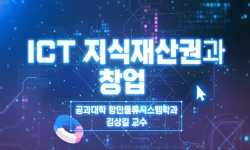우리나라의 전자소송이 본격적으로 시작된 것은 「민사소송 등에서의 전자문서 이용 등에관한 법률」이 제정되고 특허 전자소송시스템이 갖추어진 2010년경이지만, 그 뿌리는 1970 년대 후반...
http://chineseinput.net/에서 pinyin(병음)방식으로 중국어를 변환할 수 있습니다.
변환된 중국어를 복사하여 사용하시면 됩니다.
- 中文 을 입력하시려면 zhongwen을 입력하시고 space를누르시면됩니다.
- 北京 을 입력하시려면 beijing을 입력하시고 space를 누르시면 됩니다.
민사전자소송 시행 10년, 그 성과와 전망 = 10 Years of Civil Electronic Litigation: Achievements and Prospects — Focusing on Civil Lawsuits —
한글로보기https://www.riss.kr/link?id=A108155521
- 저자
- 발행기관
- 학술지명
- 권호사항
-
발행연도
2022
-
작성언어
-
-
주제어
전자소송 ; 사법정보화 ; 차세대 전자소송시스템 ; ICT ; 전자증거 ; 민사소송법 개정 ; 원격영상재판 ; ODR(Online Dispute Resolution) ; 인공지능(AI) ; Electronic Litigation ; Judicial Informatization ; Next Generation Electronic Litigation System ; ICT ; Electronic Evidence ; Amendment of Civil Procedure Act ; Remote Video Trial ; Online Dispute Resolution(ODR) ; Artificial Intelligence(AI)
-
KDC
360
-
자료형태
학술저널
-
수록면
1-306(306쪽)
-
비고
학회 요청에 의해 무료로 제공
- 제공처
-
0
상세조회 -
0
다운로드
부가정보
국문 초록 (Abstract)
우리나라의 전자소송이 본격적으로 시작된 것은 「민사소송 등에서의 전자문서 이용 등에관한 법률」이 제정되고 특허 전자소송시스템이 갖추어진 2010년경이지만, 그 뿌리는 1970 년대 후반으로 거슬러 올라간다. 대법원이 1979년 ‘사법정보 전산화계획’을 수립한 이래 법관들을 중심으로 판례 검색 및 작성 프로그램이 개발되고 데이터베이스가 구축되기 시작하였다. 또한 대국민 사법서비스의 수준을 제고하기 위해 등기 전산화와 제증명의 발급도 이루어졌다. 이러한 사법정보화의 발전에 따라 1990년대 전자소송을 시작한 외국의 예를 참고하여 전자소송을 도입해야 한다는 사법부 내부의 목소리가 높아졌다.
이에 2000년대 초반 들어 전자소송 관련 입법과 시스템 구축을 위한 준비가 시작되었고, 2010. 3. 「민사소송 등에서의 전자문서 이용 등에 관한 법률」 제정을 시발점으로 2010. 4.
특허 전자소송, 2011. 5. 민사본안 전자소송, 2015. 3. 민사집행 및 비송절차 전자소송 실시에 이르기까지 위 법 제정 당시 예정한 5년의 기간 내에 형사소송을 제외한 전 분야에서전자소송시스템 구축이 완료되었다. 이처럼 단기간 내에 전자소송 제도와 시스템을 완비한것은 선진 외국의 사례를 보아도 그 유례를 찾아보기 어렵다. 그만큼 전자소송이 쉽게 뿌리내릴 수 있는 튼튼한 ICT 환경이 구축되어 있었고, 새로운 기술에 적응이 빠른 우리 국민의기질도 한몫하였을 것이다.
10년의 세월이 지난 지금, 전자소송이 민사소송의 주류가 되었다. 사물관할과 관계없이전체 민사소송의 90% 이상이 전자소송시스템을 통해 접수, 처리되고 있다. 우리나라보다앞서 전자소송을 시행한 국가들을 벤치마킹하여 fast-follower 전략을 구사하여 왔는데, 이제는 그들과 어깨를 나란히 하면서 전자소송을 선도하는 first-mover가 된 것이다.
그러나 전자소송을 장래에도 지속적으로 발전시키기 위해서는 세계 각국의 전자소송 현황을 확인하고 더 나은 요소를 받아들이려는 노력을 게을리하지 말아야 한다. 그런 의미에서 1990년대 초반 세계 최초로 전자소송을 시행하고 차세대 전자소송시스템 NextGen을xiv 도입한 미국, 아시아 최초로 전자소송을 시작하였으며 국가 주도의 강력한 사법개혁으로 시스템을 혁신적으로 탈바꿈하려는 싱가포르, 신중하고 철저하게 전자소송을 시행하기 위하여 오랜 준비과정을 거쳐 민사소송법 개정작업을 하고 본격적으로 시스템 개발에 나선 독일과 일본, ICT 기술 발전에 힘입어 온라인 법원과 전자증거의 블록체인화를 구현한 중국 등의 동향을 유심히 살펴볼 필요가 있다.
우리나라에서는 2024년 ‘차세대 전자소송시스템’의 구축이 전자소송의 새로운 단계로 진입하는 첫 단추가 될 것이다. 노후화되어 가는 현행 시스템을 전면 개편하여 재판에 대한접근성을 높이고, 빅데이터와 인공지능 발전에 따른 급격한 사회변화와 기술 진보에 선제적으로 대응할 수 있어야 한다. 예정대로 ‘차세대 전자소송시스템’이 구현된다면, 혁신적이고사용자 친화적인 전자소송 환경이 조성될 것으로 기대한다.
한 가지 아쉬운 것은, 전자소송의 제도적 측면에서는 아직 눈에 띄는 개선의 노력이 보이지 않는다는 점이다. 5년 내 완성이라는 목표를 이루기 위해 불과 16개의 조문으로 급히만든 특별법인 「민사소송 등에서의 전자문서 이용 등에 관한 법률」 을 그대로 유지하고 있고, 이에 따라 전통적인 종이소송에 맞추어 설계된 민사소송법은 소송 현실에 대한 규범력을 잃어가고 있다. 새 술은 새 부대에 넣어야 하듯이, 더 늦기 전에 전자소송을 기본값으로민사소송법을 개정하고, 새로운 ICT 환경에 맞게 규범을 재설계해야 한다. 코로나19 팬데믹으로 갑자기 현실이 된 원격영상재판을 적극적으로 이용할 기반을 마련하고, 소액 사건은비대면-비접촉 시대에 맞게 온라인을 통해 해결함으로써 재판의 신속과 경제를 도모하는전략이 필요하다. 또한 눈앞에 닥친 인공지능 시대에 대비하기 위하여 사회적 합의에 기초한 사법부 인공지능 활용에 관한 원칙을 차분하게 가다듬어 볼 때이다.
다국어 초록 (Multilingual Abstract)
Electronic litigation in Korea began around 2010 when the 「Act on the Use of Electronic Documents in Civil Procedure, etc.」 was enacted and the patent electronic litigation system was established, but its origin dates back to the late 1970s. Since...
Electronic litigation in Korea began around 2010 when the 「Act on the Use of Electronic Documents in Civil Procedure, etc.」 was enacted and the patent electronic litigation system was established, but its origin dates back to the late 1970s. Since the Supreme Court first established the “Judicial Information Computerization Plan” in 1979, judges have developed a case search and judgment-writing program and constructed a database. Computerization of registrations and issuance of certifications were also introduced to improve judicial services to the public. With such progress of judicial informatization, calls for adoption of electronic litigation have been growing from within the judiciary, especially as judges look to other countries that adopted electronic litigation in the 1990s.
Accordingly, in the early 2000s, efforts to prepare legislation and establish systems for electronic litigation began in Korea. As a result of these efforts, the 「Act on the Use of Electronic Documents in Civil Procedure, etc.」 was enacted in March 2010. Since then, electronic systems for patent litigation have been constructed in April 2010, for civil litigation in May 2011, and for civil enforcement and non-contentious procedures in March 2015. The establishment of electronic litigation systems for all litigation areas except criminal litigation was completed within five-year period, which was prescribed at the time of enactment of the 「Act on the Use of Electronic Documents in Civil Procedure, etc.」 as the latest limit of im- xvi plementing electronic litigation. It is unprecedented that a legal system of electronic litigation was constructed in such a short period of time, even in other developed countries that have advanced legal systems. What made it possible to construct the systems quickly in Korea was its advanced ICT infrastructure that was established before the implementation of electronic litigation systems, and the Korean people who are relatively quick to adapt to new technology.
More than 10 years has passed, and electronic litigation is now the mainstream of civil litigation in Korea. Regardless of subject-matter jurisdiction, more than 90% of all civil lawsuits are filed and processed through the electronic litigation system. This adoption serves as evidence that Korea has shifted from being a fast-follower, by benchmarking countries that implemented electronic litigation systems before Korea, to a first-mover that now leads electronic lawsuits, on a par with pioneer countries.
However, to further improve electronic litigation in Korea, the judiciary must continue to examine the current state of electronic litigation around the world and draw implications for improvements. With the importance of comparative legal research in mind, this research firstly examines systems in the United States, which has implemented the electronic lawsuit system firstly in the world in the early 1990s and adopted NextGen, a next-generation electronic litigation system. This research also reviews systems in Singapore, the first Asian country that implemented electronic litigation and now seeks to innovate its system via state-led judicial reform. In addition, this research explores systems in Germany and Japan, which went through a long preparation process to carefully and thoroughly revise their Civil Procedure Acts to implement electronic litigation and are now developing systems for electronic litigation. Finally, this research reviews systems in China, which has implemented online courts and the blockchainization of electronic evidence by utilizing its advanced ICT technology.
...
목차 (Table of Contents)
- 제1장 들어가며
- 제2장 민사전자소송의 연혁
- 제3장 민사전자소송의 현황
- 제4장 주요 국가의 전자소송 현황
- 제5장 전자소송시스템의 개선 및 발전방안
- 제1장 들어가며
- 제2장 민사전자소송의 연혁
- 제3장 민사전자소송의 현황
- 제4장 주요 국가의 전자소송 현황
- 제5장 전자소송시스템의 개선 및 발전방안
- 제6장 전자소송 제도의 개선 및 발전방안
- 제7장 민사소송법 개정 시안
- 제8장 결론
- 참고문헌




 스콜라
스콜라





